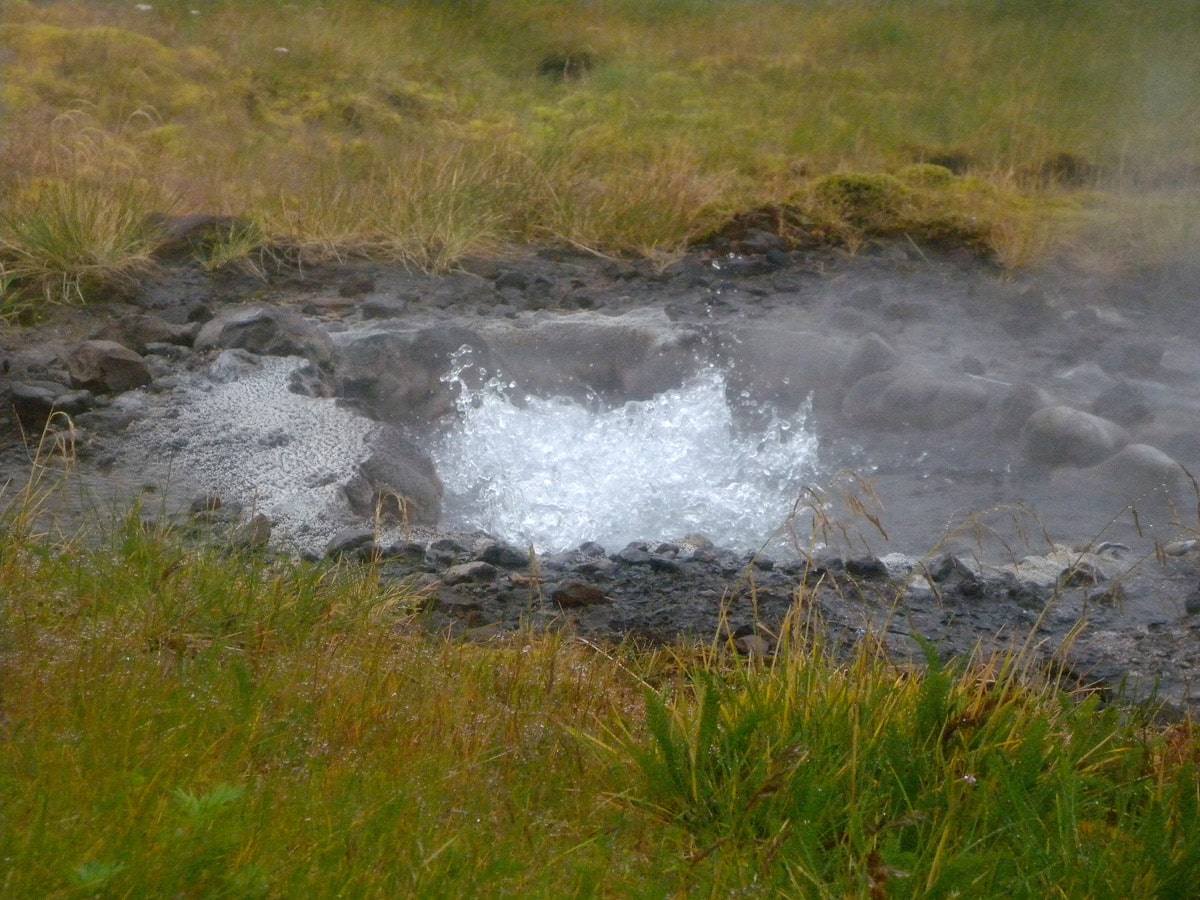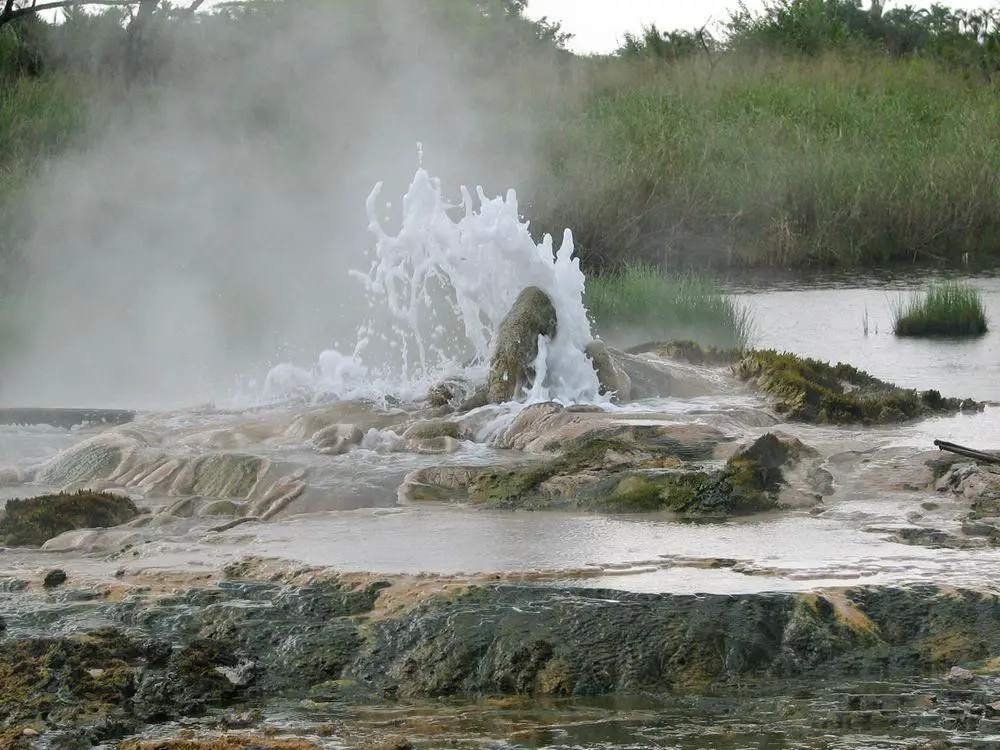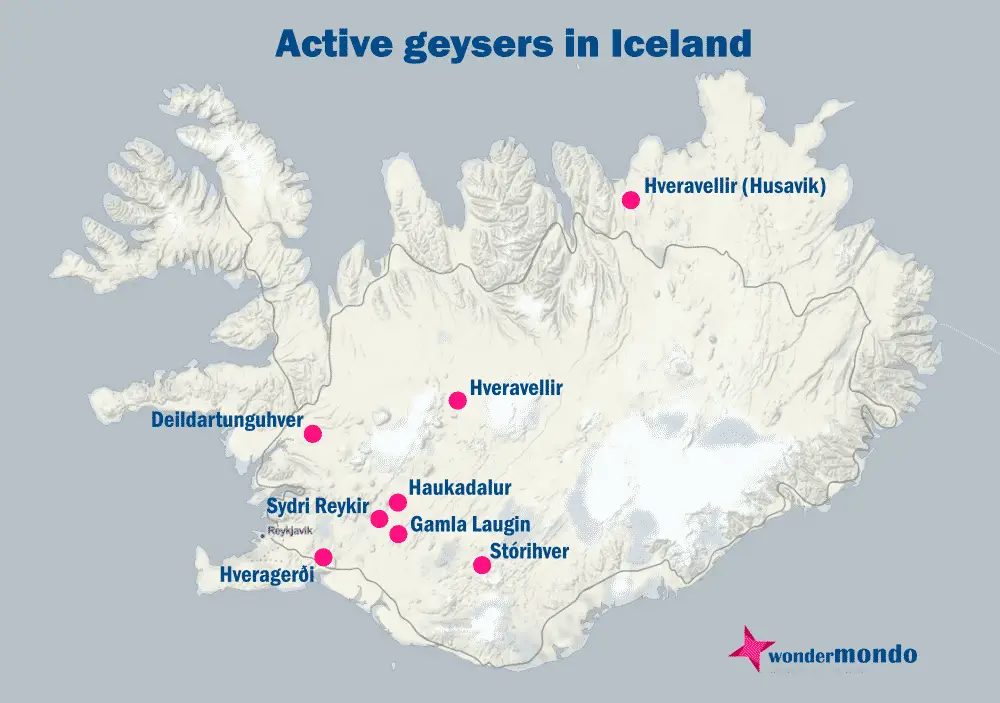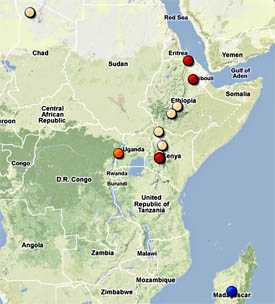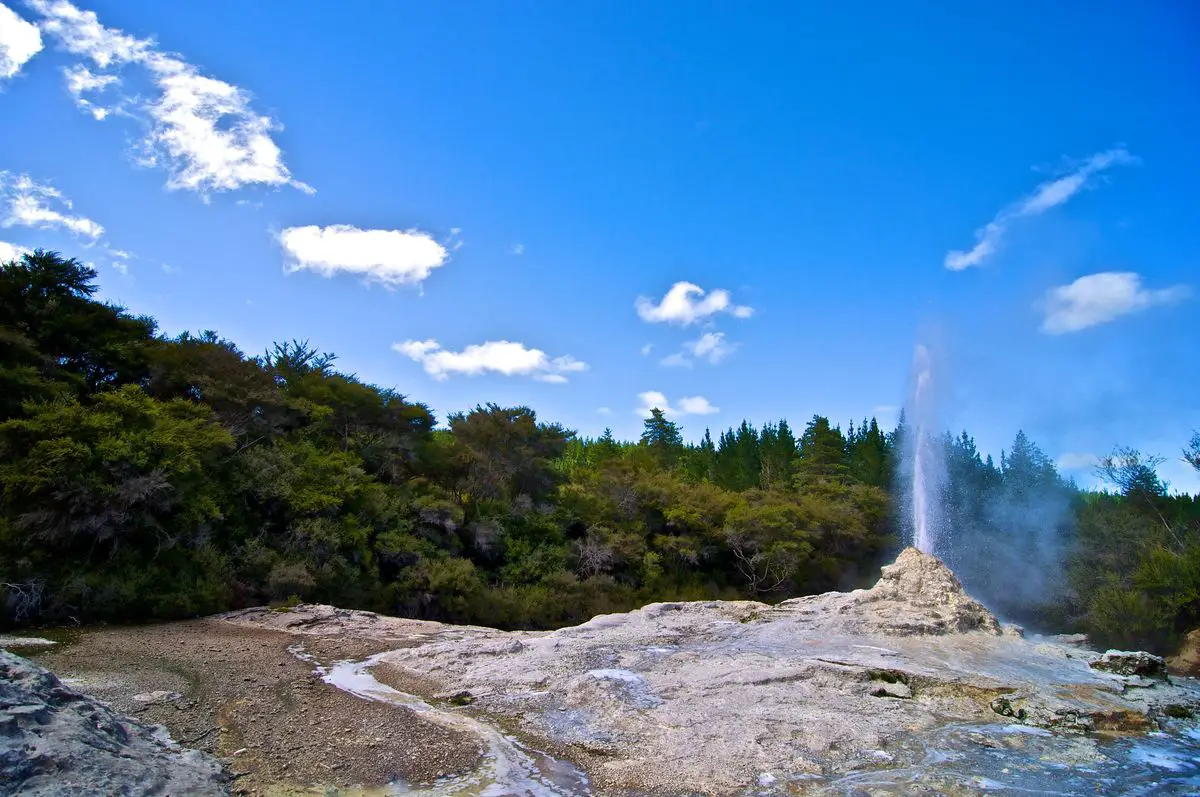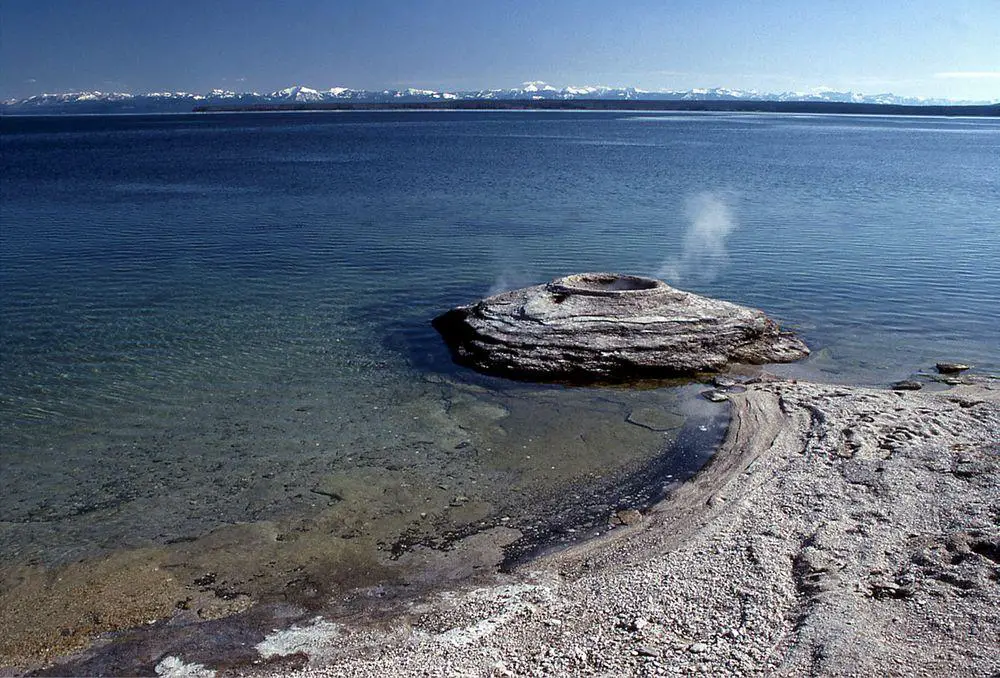Wondermondo 🢖 Categories of wonders 🢖 Geological wonders 🢖 Geothermal features 🢖 Geysers
Category
Geysers
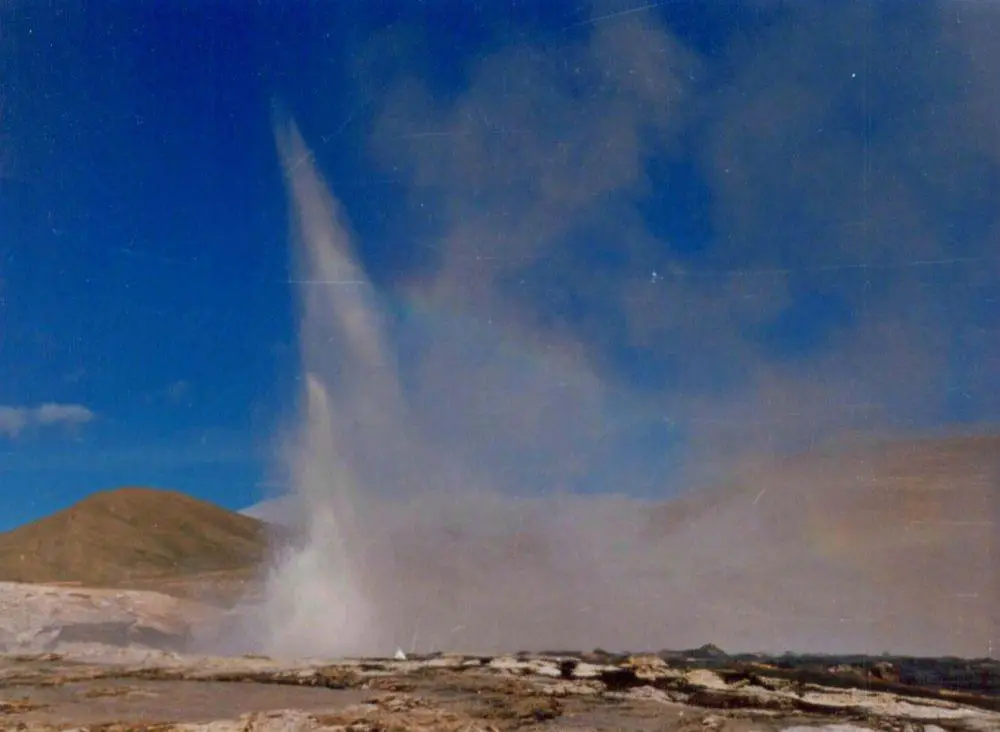
 Described geysers
Described geysers
If you see this after your page is loaded completely, leafletJS files are missing.
 What is included in this category?
What is included in this category?
This category includes natural geysers, perpetual spouters and cold water geysers of the world.
What are natural geysers?
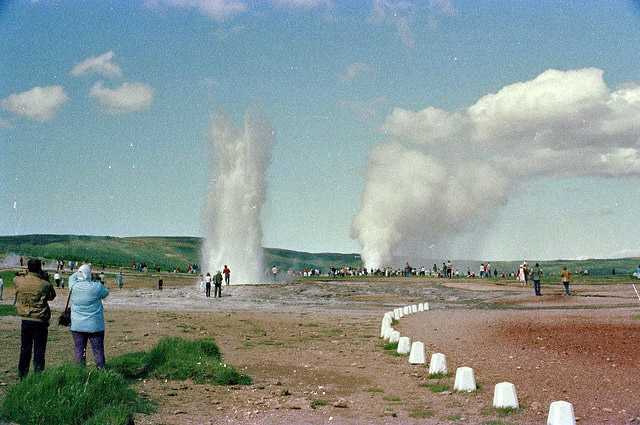
Hasty hydrogeologist would say: geysers are thermodynamically and hydrodynamically unstable hot springs. "Normal" people would say – geysers are hot springs which at more or less regular intervals shoot up a fountain of boiling water and steam. Sometimes these fountains are even 100 m tall… or even 450 m!
A recipe for a natural geyser
Geysers are a rarity – there are just a few places in the world with true geysers. This is because there are needed four preconditions for a proper geyser:
- Constant supply of ground water. A permanent flow of groundwater is not that common on Earth – many locations are too dry for this. A continuous flow of groundwater is rare on the summits of volcanoes – locations, which otherwise would be good candidates for geysers. Sometimes not too much groundwater is needed – the climate around El Tatio geysers (Chile) is dry but geysers here are economical and reuse most of the water.
- Source of heat – magma close to the ground surface – close enough to heat the groundwater above the point of boiling. One should remember that higher up in the mountains the boiling point is at a lower temperature, f.e. in Yellowstone (2300 m above sea level) the boiling point is at 93° C.
- Suitable configuration of groundwater reservoir. Underground reservoirs of geysers are very hard to access, but research thus far shows, that reservoirs of geysers might be very complex, consisting of smaller channels and large voids.
- Tough surrounding rocks. The hydrothermal processes in the geyser create high pressure and fragile rocks quickly cause the collapse of the geyser. Even the sturdiest rocks can not last these pressures forever – due to this, the lifetime of most geysers is not very long. Most geysers of the world have formed in rhyolite – a specific volcanic rock with a similar chemical composition to granite.
How works a geyser?
When the temperature of water exceeds a boiling point, the water turns into steam which takes at least 1500 times more space than the water. If the boiling point is exceeded in the whole mass of water, an explosion happens.
Thus – after the eruption of the geyser the reservoir has been emptied. Colder water starts to fill up the reservoir – and it starts to heat up. At some moment the whole reservoir is filled with water. At the deepest part of the reservoir, the rocks are hotter and water gets heated beyond the point of boiling. The pressure of the water column above it at first does not allow for the steam to rise up.
Now the water column in the geyser is unstable – and even a single bubble or small stone leads to a sudden eruption, or the eruption starts by itself at a certain moment. The steam suddenly pulls upwards and together with the upper layers of the water flies up in the air. As the water column gets rid of the colder layers of water, the remaining steam also blows up. This continues for some time until the geyser reservoir is empty. Now it can start again…
Types of geysers
There are distinguished two kinds of natural geysers:
- Cone geysers are erupting from the summit of a small cone – they look like small volcanoes. This cone is shaped by the geyser itself and consists of geyserite – siliceous rock. Geysers in Dallol (Ethiopia) though have created cones of salt.
- Fountain geysers are beautiful pools without bottoms, filled with unusually lucid water. These pools erupt with splashing action.
What are perpetual spouters?
There are springs that permanently shoot up boiling water and steam. Here the mechanism is simpler – as the water gets into the reservoir, it is turned into steam almost instantly and is blown up in the air.
Such springs are very interesting natural landmarks – but they are not geysers. Geysers have periodic, visually very impressive explosions, perpetual spouters are permanent and not high.
Unfortunately most tourists and, what is worse – the tourism industry – calls them geysers. Wrong!
What are cold water geysers?
Water in many springs is rich with carbon dioxide. If the configuration of the spring reservoir is similar to the one of true geysers, the effect can be similar: at the depth of the spring, the reservoir has accumulated the CO2 gas. It can not rise upwards due to the pressure of the water column above it. At some moment the pressure gets so high, that the water column above the gas is pushed upwards, like a cork from a bottle of champagne. Ola! A fountain of genuine carbonated water gets off!
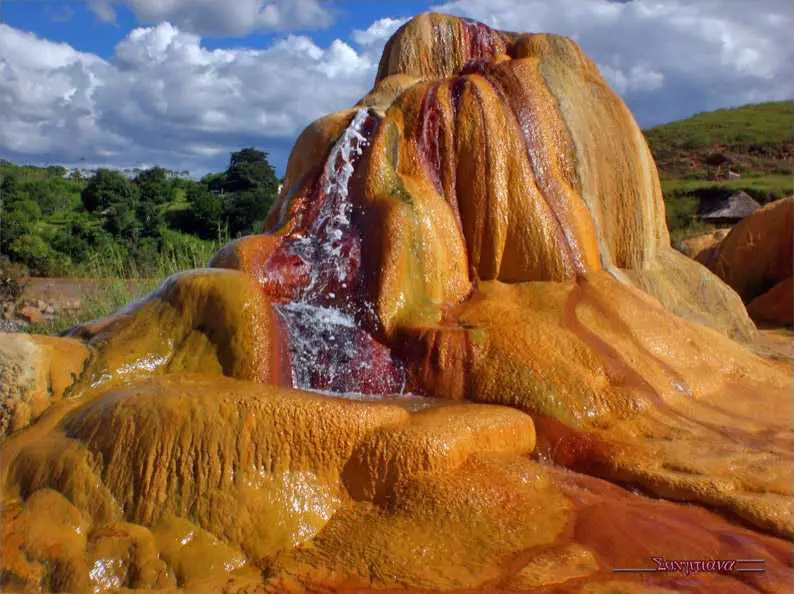
Cold water geysers are man-made – these are just boreholes that have reached deep layers of carbonated water. Sometimes the upper end of the metallic borehole gets covered with sediments of lime and dissolved iron from the borehole itself – there forms a weird-looking cone in orange and brown color.
In some of these springs the water is not cold – it might be even hot. Nevertheless, they are powered by carbon dioxide and not steam.
These landmarks are partly artificial and definitely: not true geysers.
There are the following articles about the geysers:
 Top 25 geysers and geyser fields
Top 25 geysers and geyser fields
Africa
Dallol hot springs and geysers
Ethiopia
One of the visually most outstanding places on Earth, the hot springs have a high salt concentration that has shaped terraces and other formations of very bright, unusual colors. Among the hot springs, there is also a salt geyser – possibly the only one in the world.
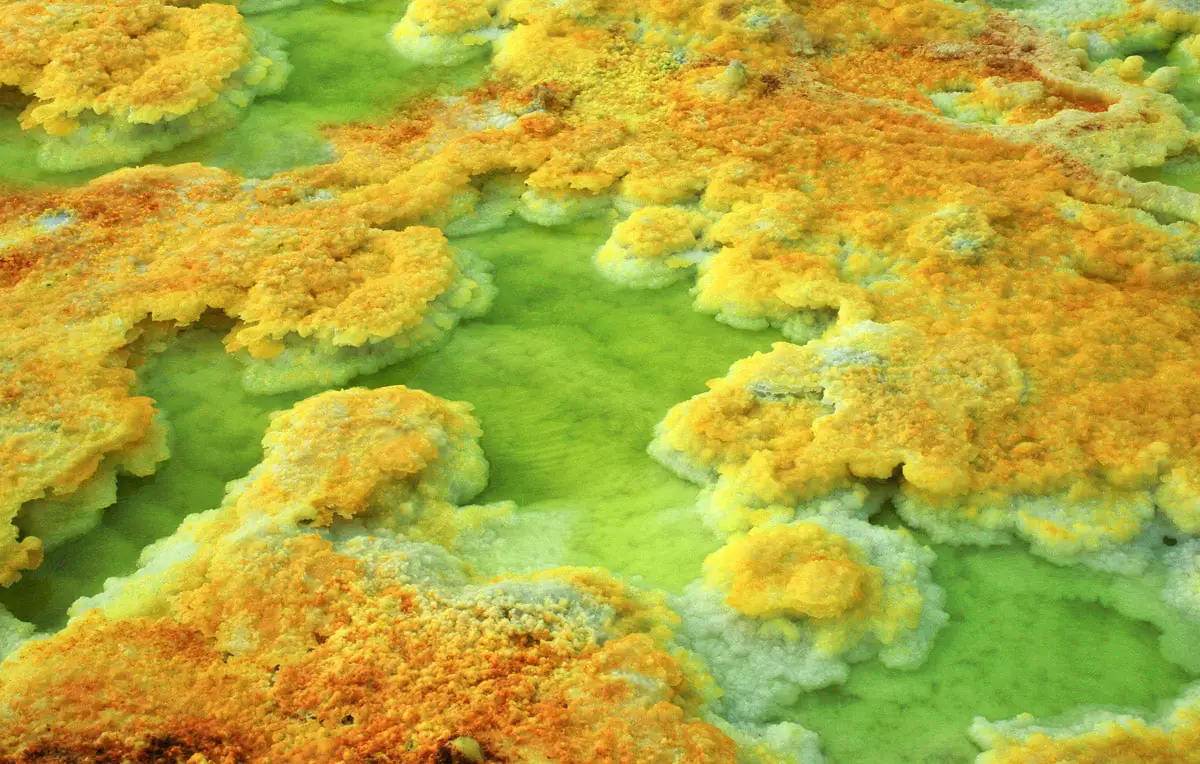
Loburu Geysers and Hot Springs, Lake Bogoria
Kenya
In several geothermal areas around Lake Bogoria, there are more than 10 active geysers, up to 5 m high.
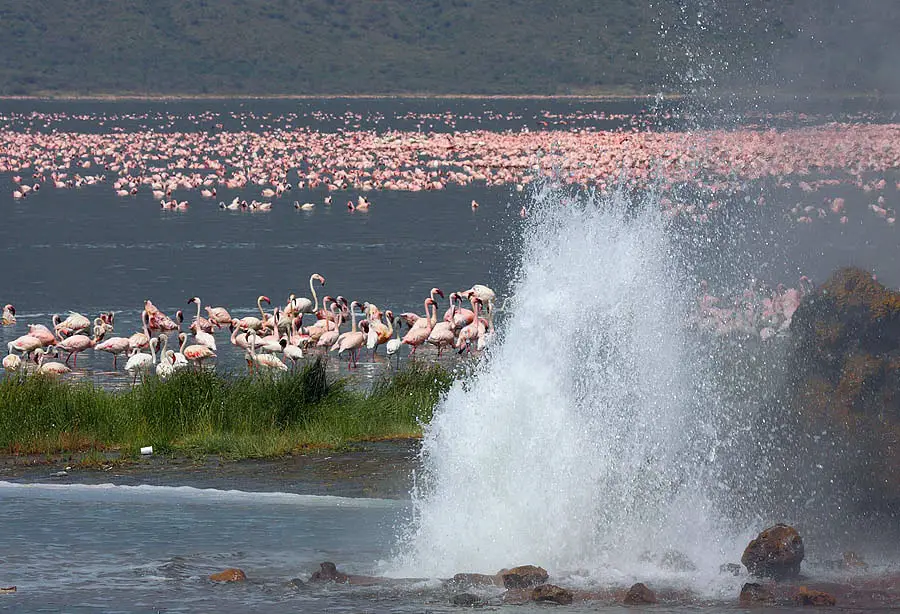
Asia
Valley of Geysers
Russia
One of the largest and most unusual geyser fields in the world, the only large geyser field in Asia. Consists of more than 200 geysers, most erupting at various angles. Massive mudflow covered approximately two-thirds of the geysers but the valley still is a very interesting natural monument. Geyser Velikan is up to 40 m tall.
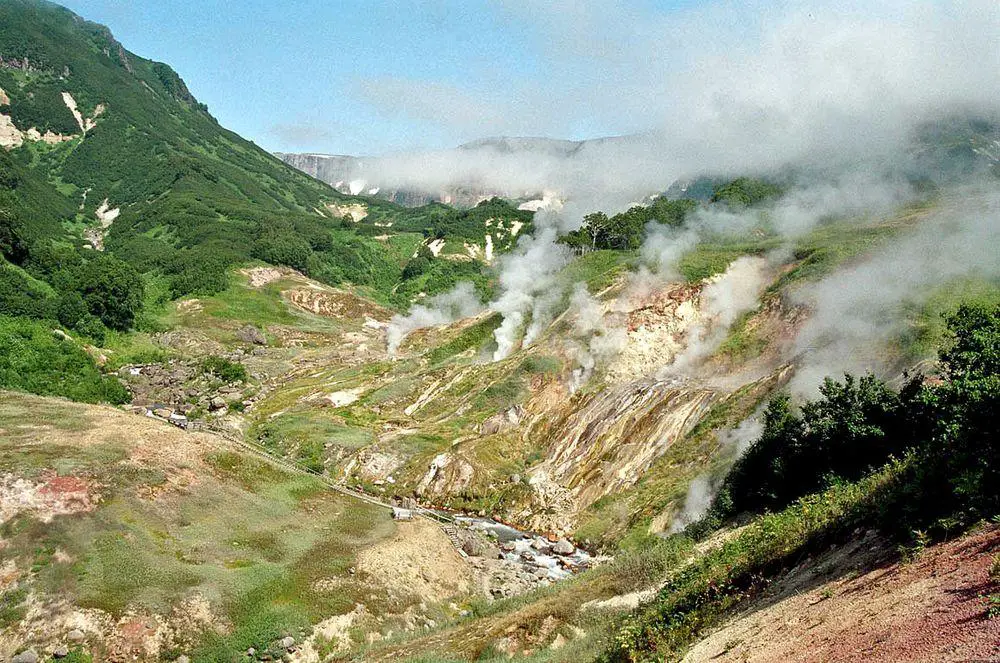
Australia and Oceania
Wai-O-Tapu
New Zealand
One of the most beautiful geothermal areas worldwide. Besides the Lady Knox geyser, mud pools, numerous hot springs, and sinter terraces it contains a highly unusual hot spring – Champagne Pool, constantly filled with carbon dioxide bubbles. Along the rim of this spring are deposited bright orange arsenic and antimony salts.
Orakei Korako
New Zealand
A geothermal area with unique, colorful sinter terraces and geysers. The largest geyser field in New Zealand with some 35 active geysers. The lower terrace – Emerald Terrace – is the largest sinter terrace in New Zealand. Part of it is flooded by a hydropower station, submerging some 200 hot springs and 70 geysers.
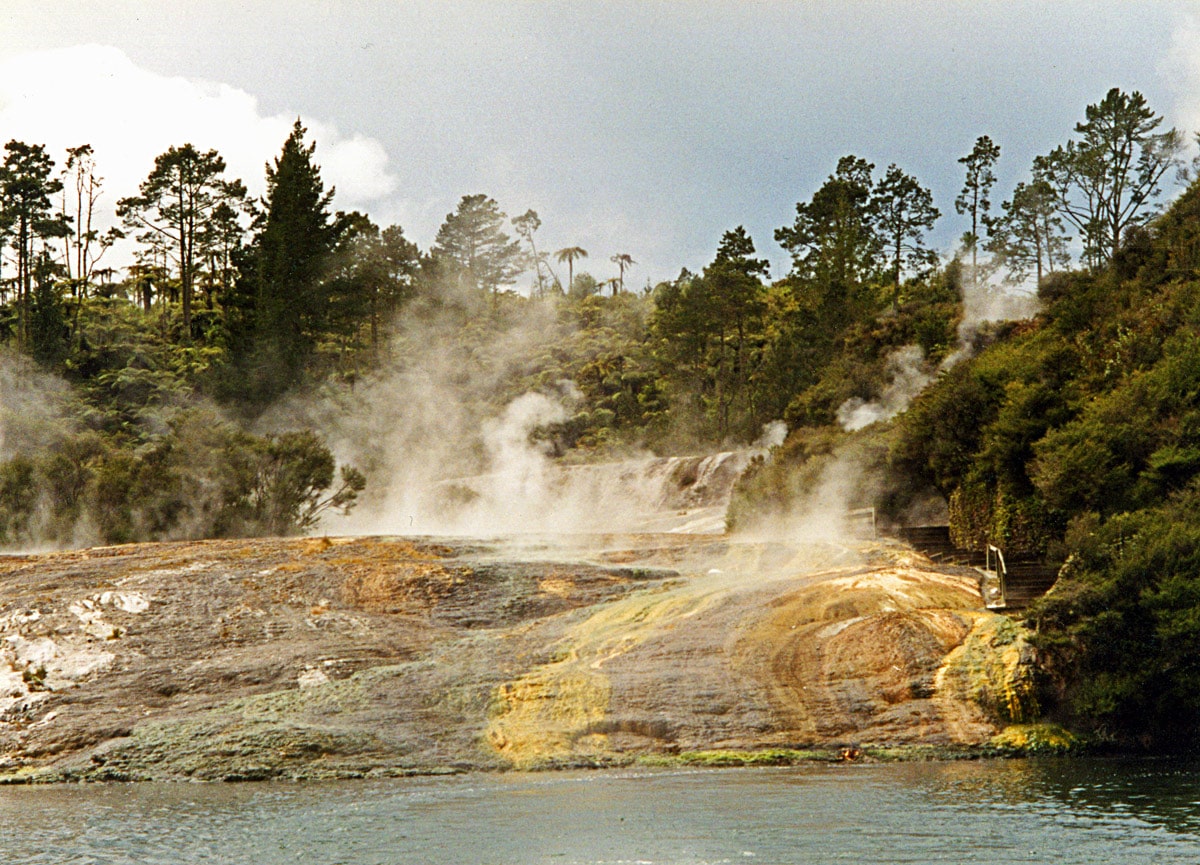
Whakarewarewa geothermal area
New Zealand
Geothermal area in Rotorua city with unique cultural properties. The facilities offered by geothermal fields have been used by Maori since at least 1350 AD – they developed bathtubs, and made food here. The area contains seven active geysers including the up to 30 m high Pohutu Geyser.
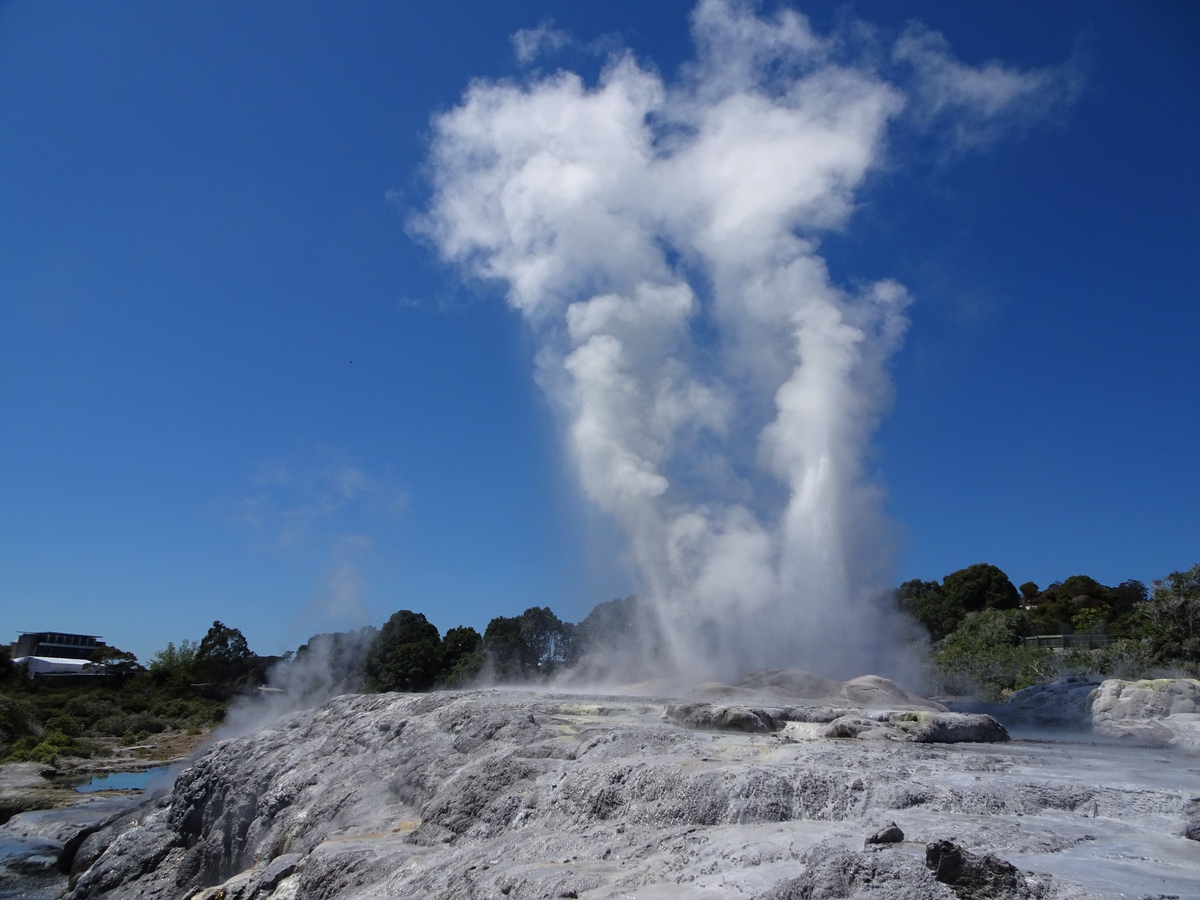
Europe
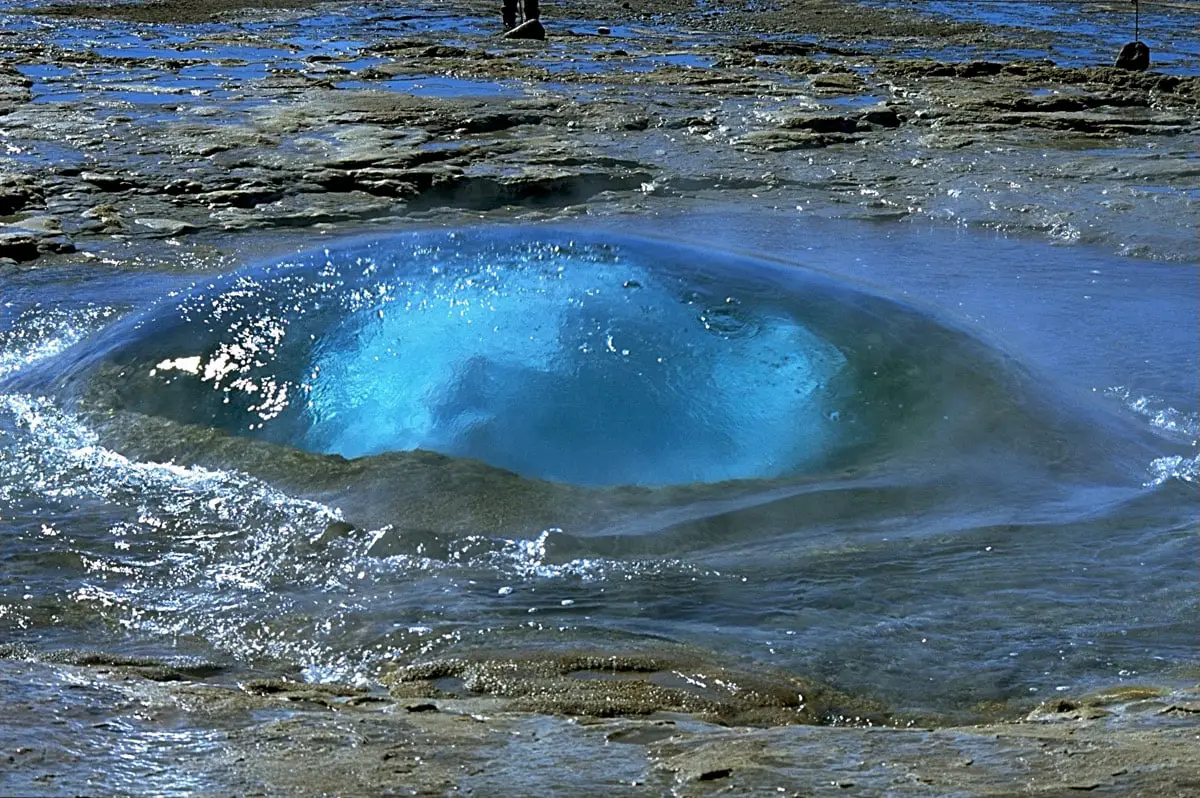
Haukadalur geothermal area
Iceland
Two spectacular geysers – Geysir and Strokkur – are located close together. Geysir has given the name to the geological phenomenon of geysers. Geysir has been up to 100 m high in the past. Strokkur is very intense, erupting 25 – 35 m high every 4 – 8 minutes. In the area are some more geysers and hot springs.
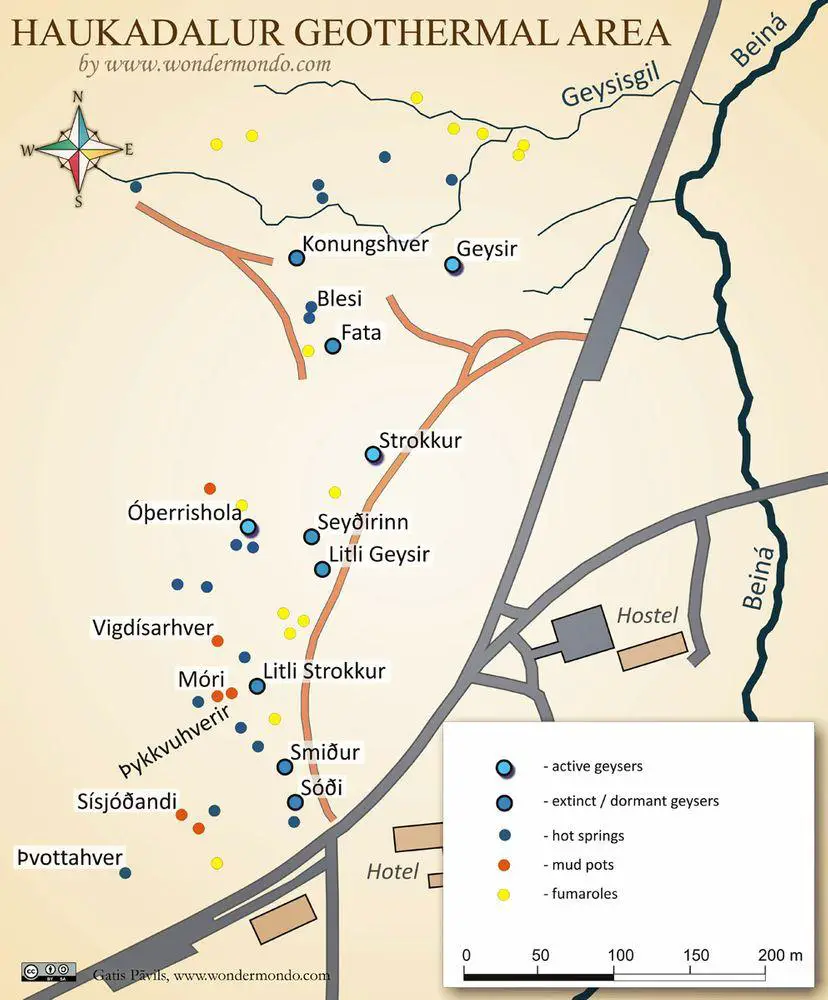
Geysir
Iceland
Geysir has given the name to the geological phenomenon of geysers. Geysir has been up to 100 m high in the past.
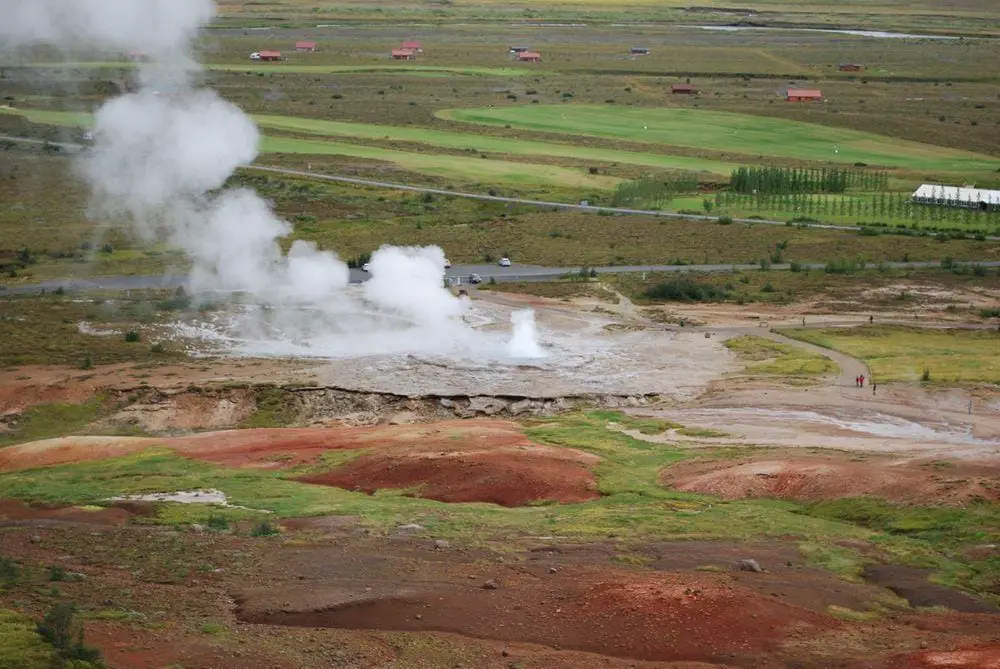
Hveravellir Geothermal Field
Iceland
Beautiful geothermal field and popular tourist destination. The area contains several notable hot springs and geysers, such as Gjósandi, Bræðrahver, Grænihver, Rauðihver, Öskurhóll, Fagrihver, and others. Here are at least six geysers.
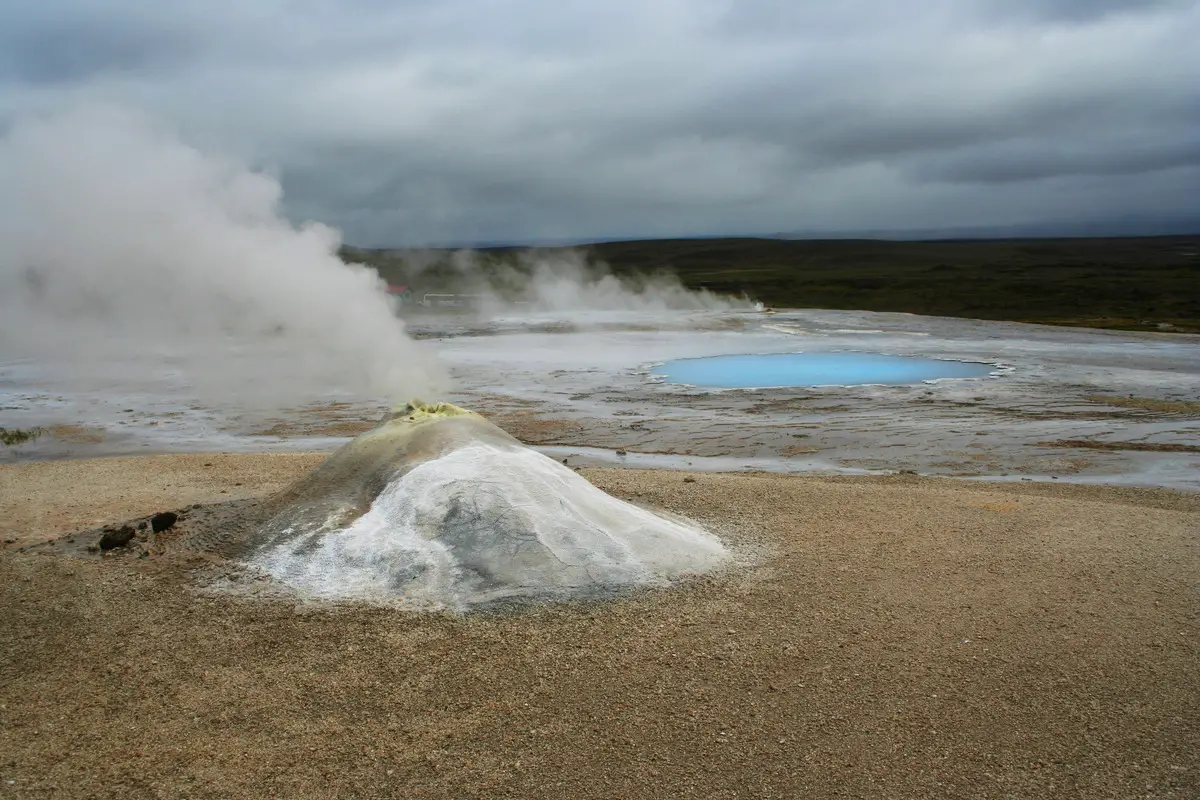
Gunnuhver geothermal area
Iceland
A geothermal field with mud pools and fumaroles, former geysers. A legend about a ghost that was dragged into the fumarole.
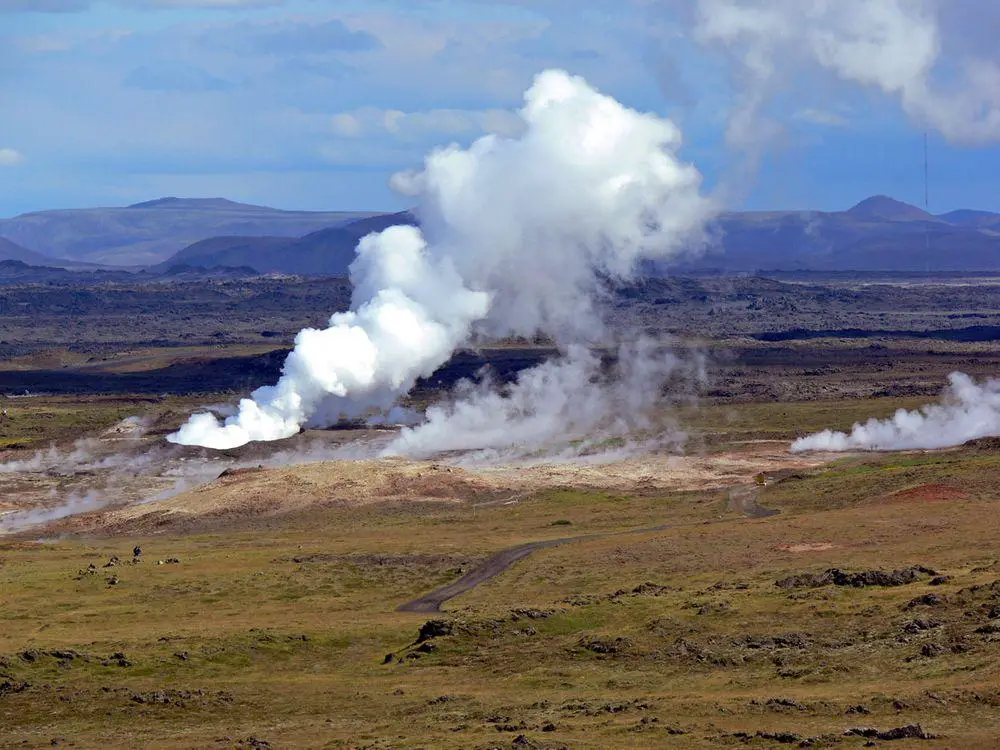
Krysuvik – Seltun geothermal area (Krýsuvík – Seltún)
Iceland
Spectacular geothermal fields right on the Mid-Atlantic ridge. Hot springs, solfataras, fumaroles, and colored soil.
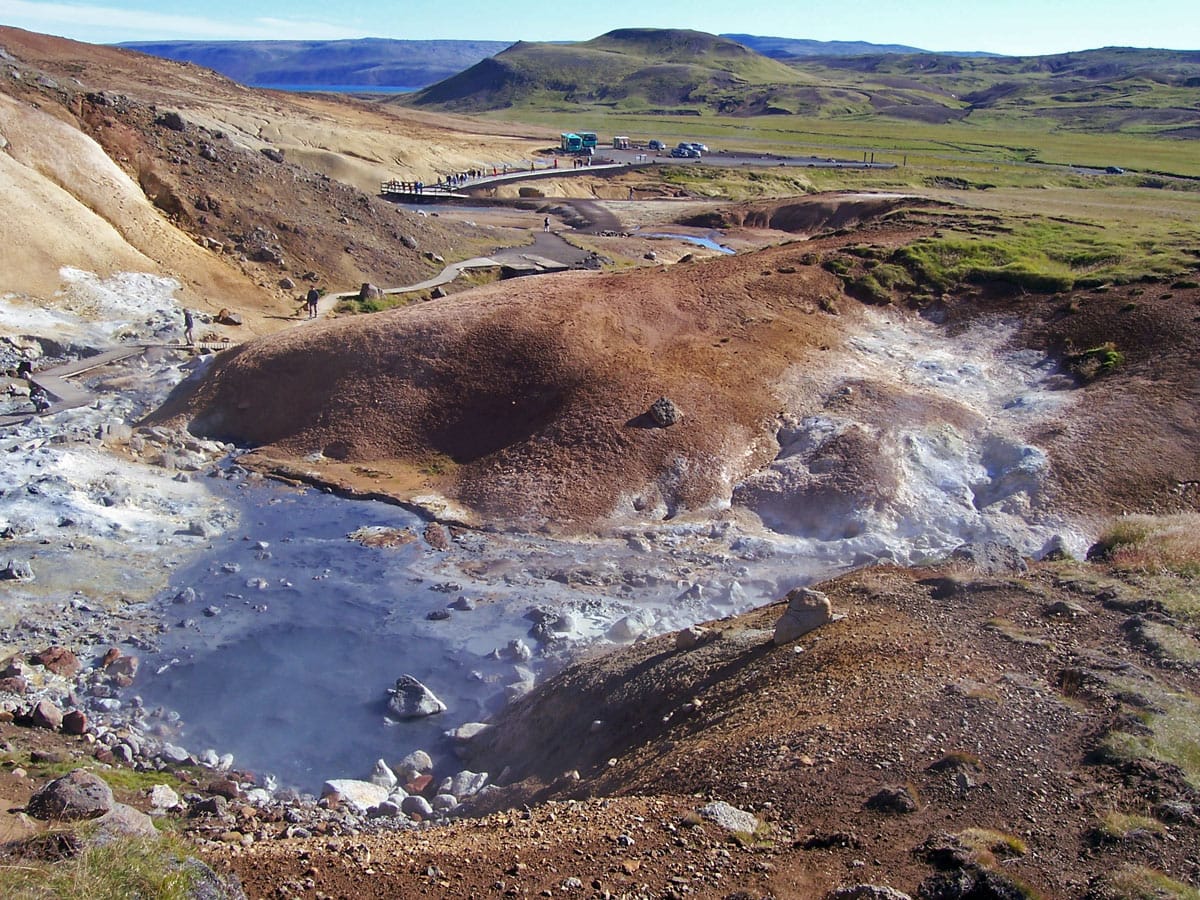
North America
Old Faithful
United States
The most predictable geyser in the world, erupting almost every 91 minutes. The height of the eruption is up to 56 m.
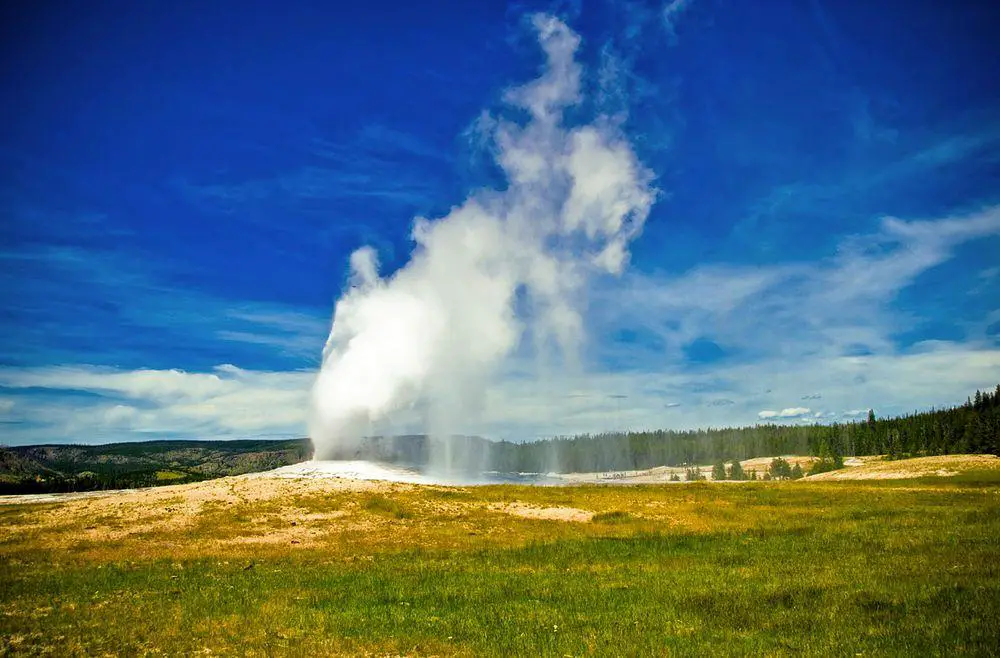
Geysers of Yellowstone National Park
United States
This is the largest concentration of active geysers in the world with more than 500 active geysers. Currently, the world’s most powerful geyser, the Steamboat geyser (up to 90 meters high) is here. It consists of several groups of geysers, many being the most spectacular in the world.
Norris Geyser Basin
United States
Very interesting and rich geyser field at the site where two fault lines intersect. Here the geysers contain highly acidic water, which is rare in the world. Here is located the tallest active geyser in the world – Steamboat Geyser. It erupts rarely, but then – up to 116 m high. Amazing is the beautiful Echinus Geyser – the largest acid geyser in the world with interesting formations around it.
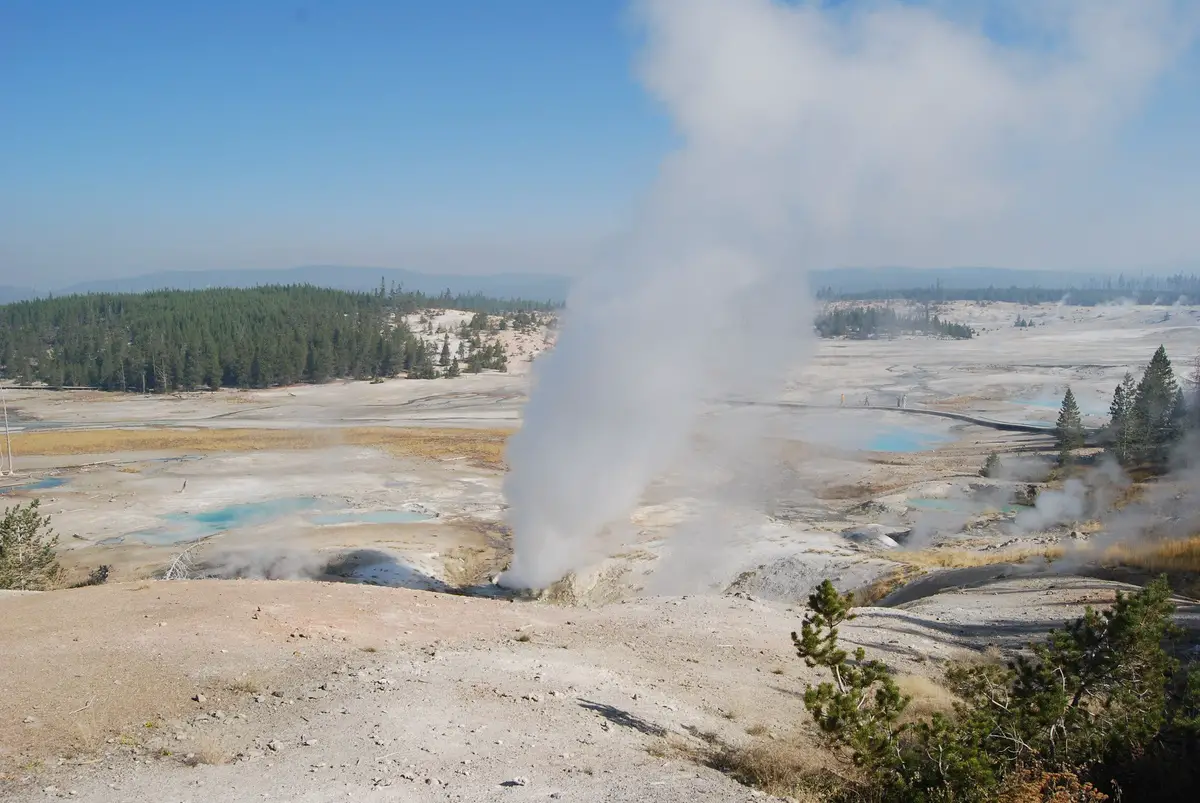
Midway Geyser Basin
United States
This geothermal area contains such interesting features as Excelsior Geyser – a large pool that a century ago exploded up to 91 m high. Here is also the amazing, colorful Grand Prismatic Spring.
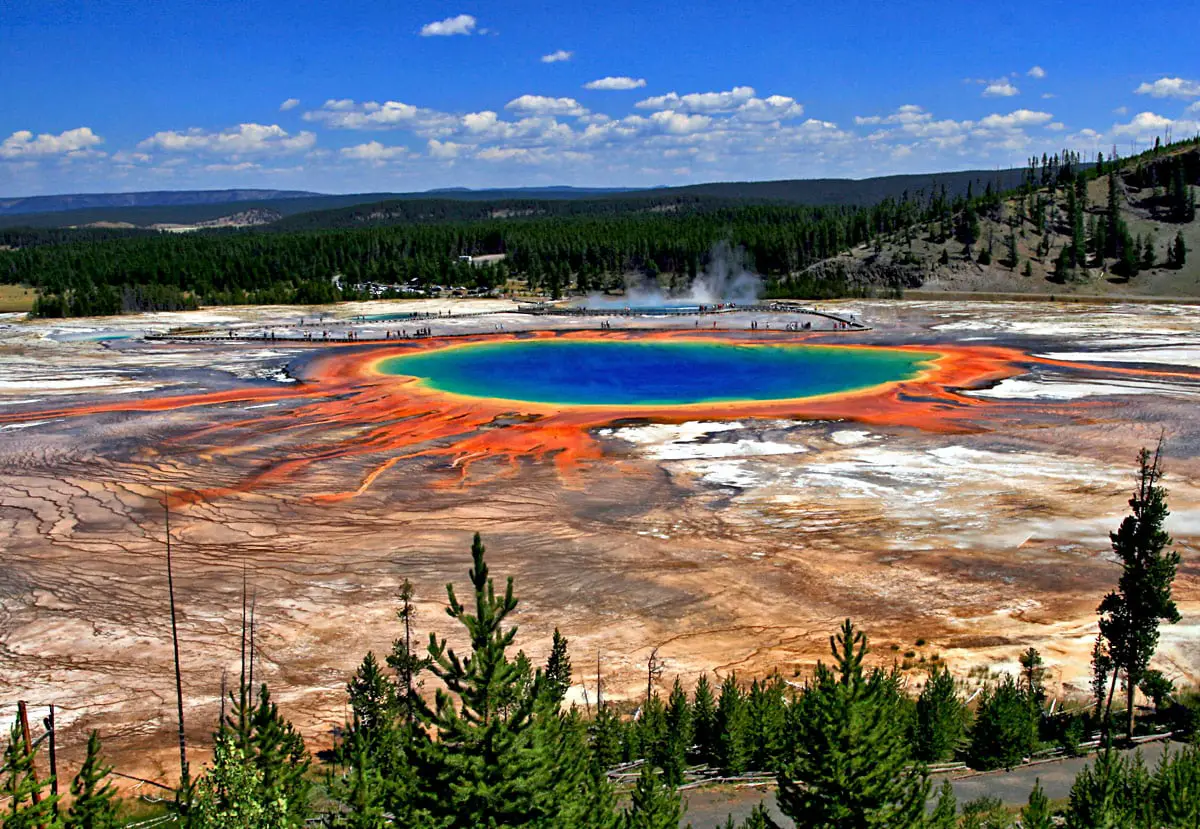
Upper Geyser Basin
United States
One of the largest geyser fields in the world with almost 300 geysers. Here are located some of the iconic geysers in the world – the Old Faithful Geyser (32 – 55 m high), and the Beehive Geyser (45 – 60 m high). Giantess Geyser erupts several times in the year up to 60 m high, and eruption lasts for 1 – 43 hours.
Lower Geyser Basin, Yellowstone
United States
Second richest geyser area in Yellowstone. Here are such geysers as Great Fountain (up to 67 m tall), Clepsydra, White Dome (geyser with a high cone, erupting up to 9.1 m), and Fountain.
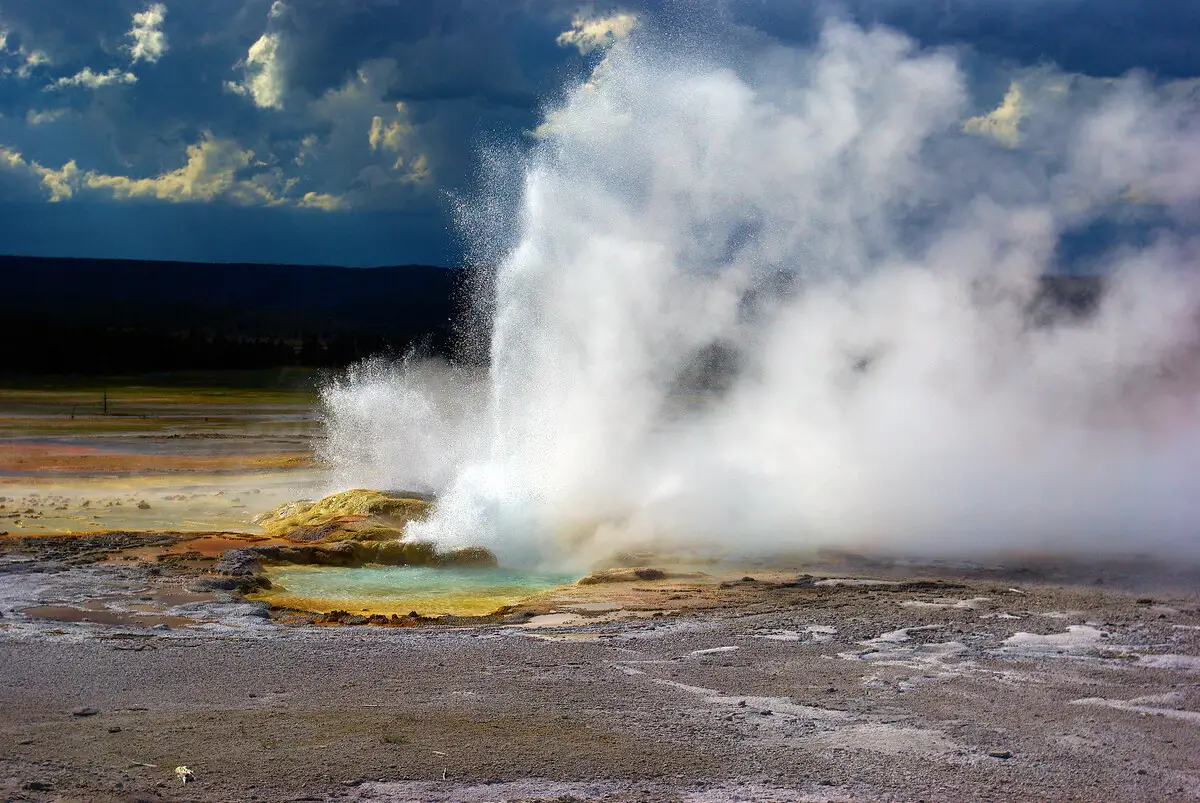
West Thumb Geyser Basin
United States
Contains Fishing Cone – a geyser cone in lake water. One of the amazing geysers here is Overhanging Geyser – located on an overhanging cliff above Yellowstone Lake. It is amazing to imagine how the hot water is accessing this geyser. The geyser field includes also geothermal features under the lake level.
Steamboat Geyser
United States
The tallest geyser in the world, erupting up to 90 m tall.
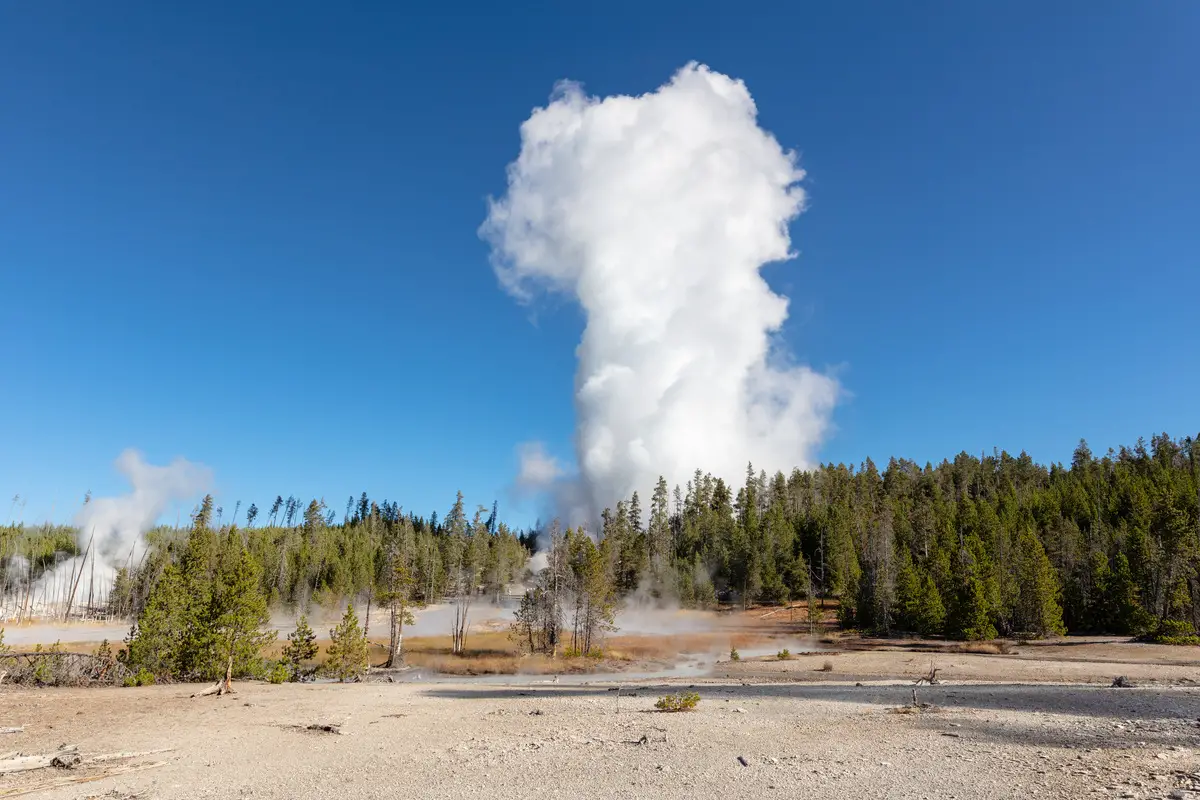
Ixtlán de los Hervores geothermal field
Mexico
In this geothermal field earlier used to be up to 14 geysers (it is possible that a few still exist near Salitre village). Now here are several artificial geysers. The tallest of these artificial geysers – the Ixtlan Geyser – reaches a height of up to 30 m.
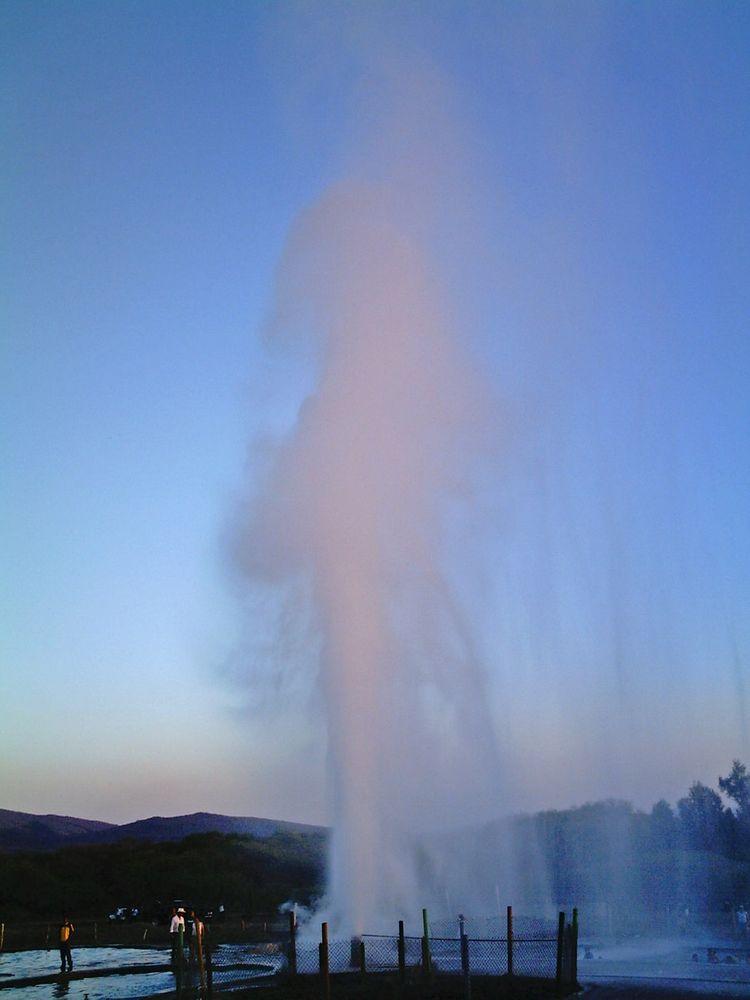
Shoshone Geyser Basin
United States
Pristine geyser field with very well preserved, beautiful sinter formations. Contains 110 thermal features, including Union Geyser, and Minute Man Geyser (up to 12 m).
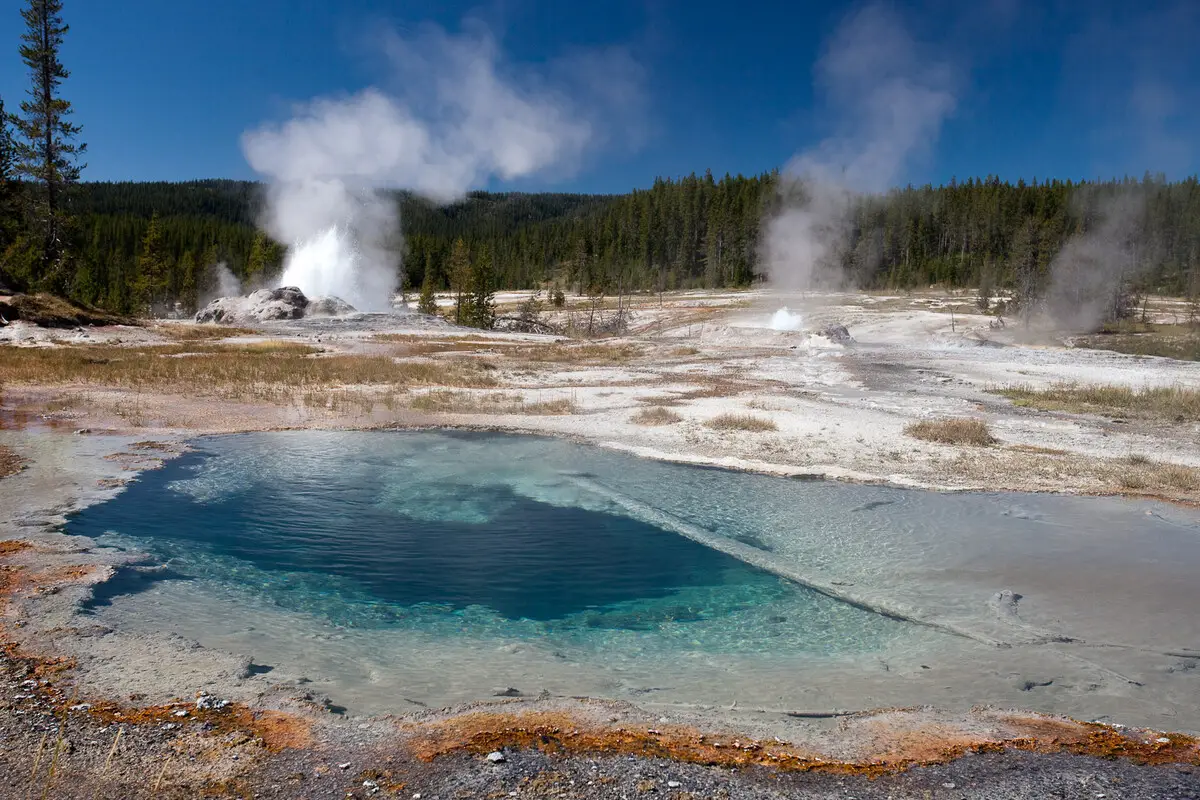
Heart Lake Geyser Basin
United States
Comparatively little visited area, contains such geysers as Rustic (up to 14 m), Spike, and Deluge Geysers.
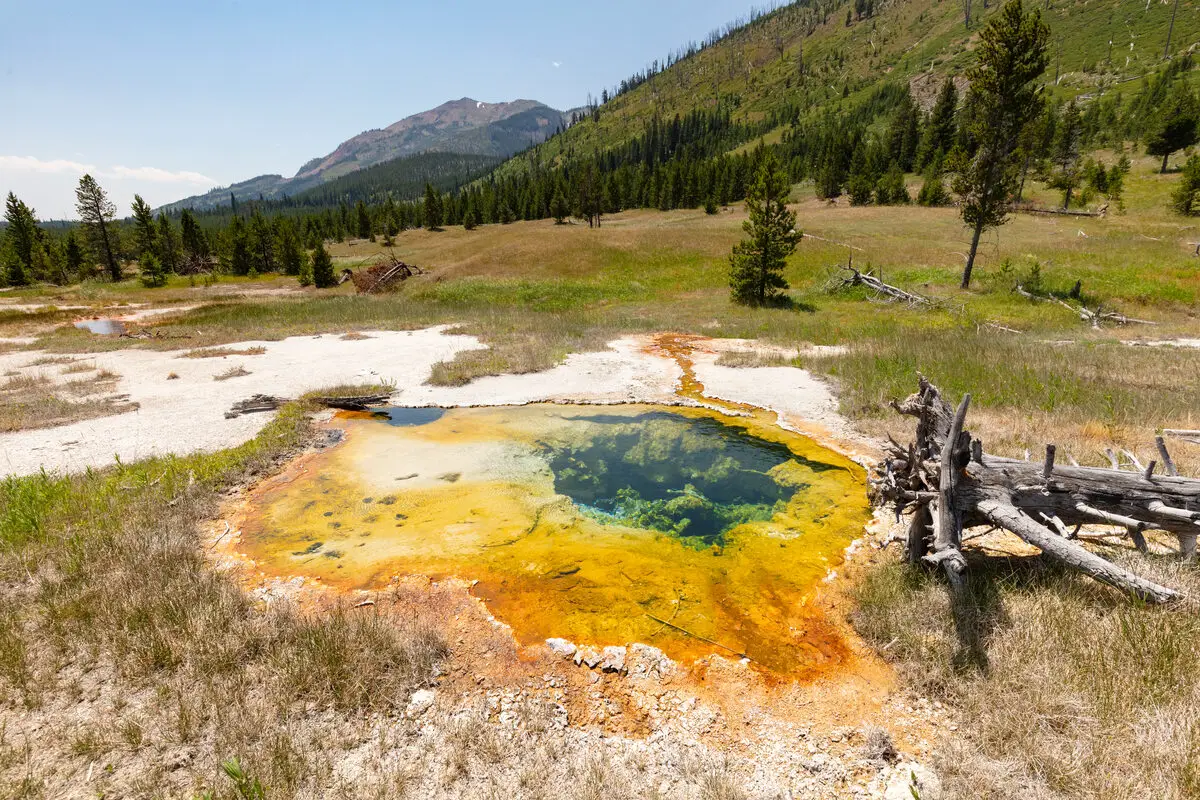
Fishing Cone
United States
Unusual geyser, rising as a small island – cone from the lake. Earlier it erupted up to 12 m high.
South America
El Tatio
Chile
A large geyser field with at least 85 active geysers erupting up to 6 m high. The field is especially impressive in the early morning. At least 100 geysers and 30 perpetual spouters have been active here in historical times.
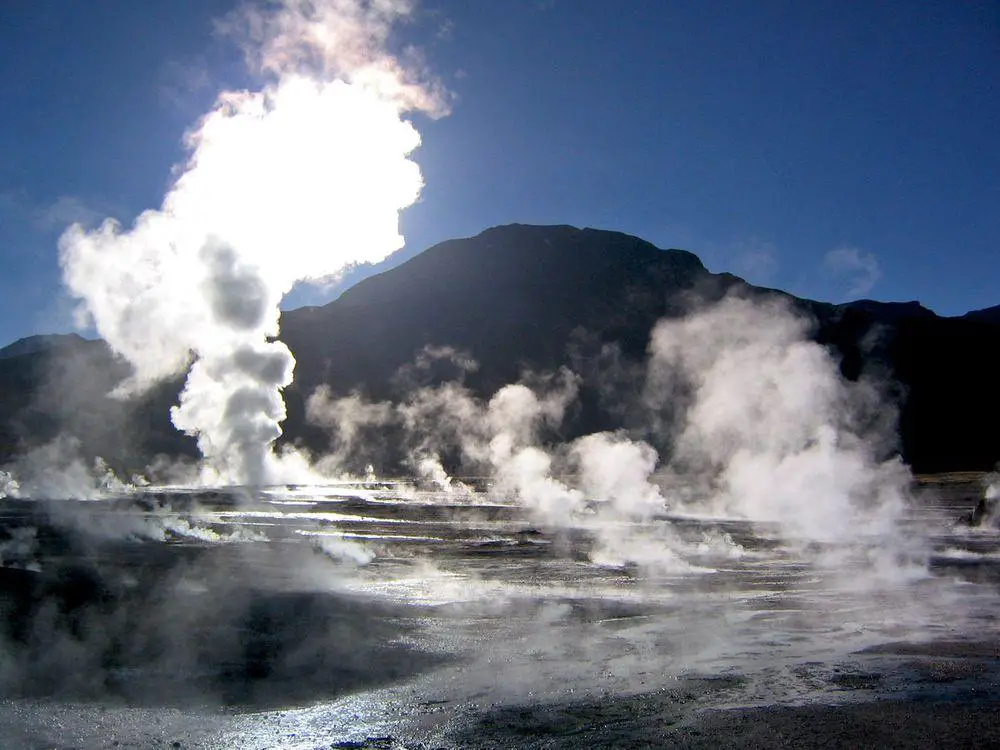
 Recommended books
Recommended books
Geysers: What they are and How They Work
In Geysers: What They Are and How They Work, T. Scott Bryan explains the geological setting that produces the pressure, heat, and abundant water necessary for a geyser to form and introduces readers to the variables that shape each geyser’s distinct personality. Some geysers spout just inches above a pool of water and others blast hundreds of feet in the air from conical vents. Some remain quiet for decades only to explode unexpectedly several times in a single month while others regularly erupt at scheduled intervals.
The Geysers of Yellowstone, Fifth Edition
This new edition of The Geysers of Yellowstone is the most up-to-date and comprehensive reference to the geysers of Yellowstone National Park, describing in detail each of the more than five hundred geysers in the park. The entire text has been revised and geyser descriptions have been updated based on activity observed through early 2018. Information about a number of significant new geyser developments has been added, as well as recent knowledge about some of the world’s geyser fields outside Yellowstone.

